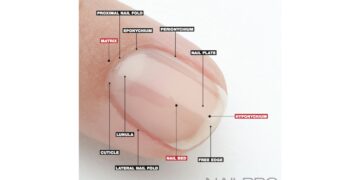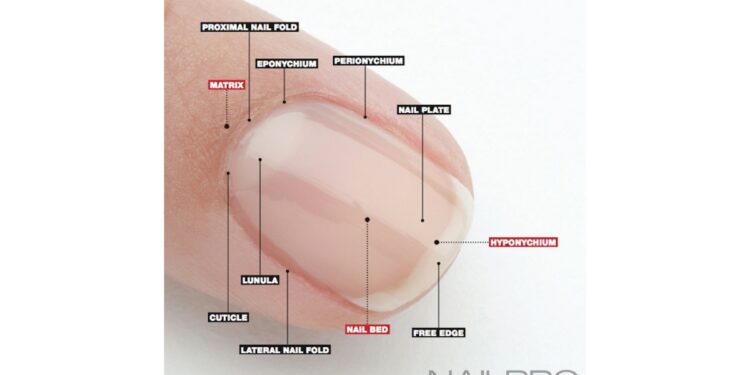Understanding Nail Anatomy: The Foundation for Professionals
Having a deep understanding of nail anatomy is not only crucial for passing your state board exam but also for providing top-notch services to your clients. Knowledge of the parts of the nail helps nail technicians communicate more effectively and offer better treatments. In this guide, we’ll delve into the 11 essential parts of a nail, ensuring you remain a knowledgeable and credible professional in the field.
The Nail Matrix
Located under the skin behind the fingernail, the nail matrix is where nail production occurs. It is responsible for generating new cells that form the nail plate, hence its critical role in nail growth. Damage to the nail matrix can affect nail growth and overall nail health.
The Nail Bed
The nail bed lies underneath the nail plate and is crucial for keeping the nail attached to the finger. It supports the nail plate, providing it with necessary nutrients. A healthy nail bed is indicated by a smooth, healthy-looking nail plate.
The Nail Plate
The most visible part of the nail, the nail plate is the hard, translucent part of the nail. It protects the nail bed beneath it and is composed of layers of keratinized cells. Damage to the nail plate often means damage to the underlying parts, leading to various nail disorders.
The Eponychium
Often misidentified by clients as the cuticle, the eponychium is the living skin on top of the proximal end of the nail plate. It functions as a protective seal preventing pathogens and moisture from penetrating into the nail bed.
The Cuticle
Unlike the eponychium, the cuticle is the dead skin that adheres to the nail plate as it grows out from the eponychium. Proper removal is critical as leftover cuticle can hinder the adherence of nail products, leading to lifting and other issues.
The Lunula
The lunula is the crescent-shaped area at the base of the nail plate, often visible as a lighter-colored half-moon. It is technically part of the nail matrix, and its size can vary among individuals. Its visibility can be an indicator of overall nail health.
The Hyponychium
This thickened area of skin under the free edge of the nail plate acts as a protective barrier, preventing pathogens from entering the nail bed. It is essential to avoid aggressive filing or cutting here, as it can lead to infections.
The Nail Grooves
These are the slits or furrows on the sides of the nail plate. Nail grooves help guide the nail plate as it grows out and provide a place where the nail sits within the finger.
The Nail Walls
The nail walls are the skin folds that overlap the sides of the nail. They provide additional protection to the nail plate and are critical in shaping the nail’s growth.
The Free Edge
The part of the nail plate that extends beyond the finger, allowing for cutting and shaping. It is the base for forming nail extensions. Keeping the free edge strong and healthy is important in preventing nail breakage.
The Perionychium
This refers to the tissue bordering the nail on the sides and is prone to hangnails if not carefully maintained. Proper care and hydration can help prevent any damage to this area.
By mastering these key components of nail anatomy, you enhance your abilities to diagnose issues, provide better services, and educate your clients. Understanding nail anatomy not only reinforces your professional credibility but also ensures client trust and satisfaction.

























